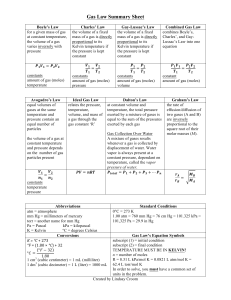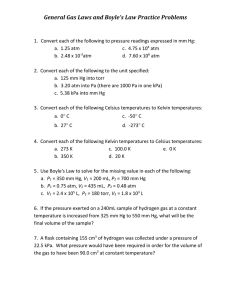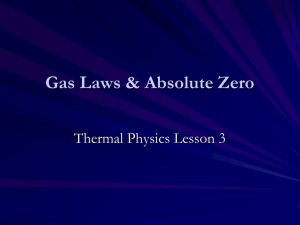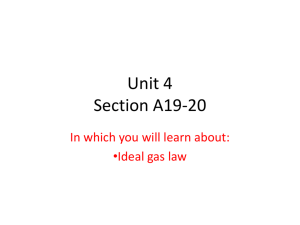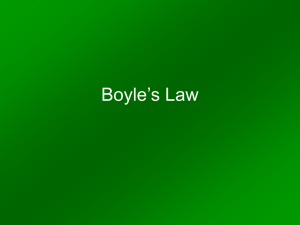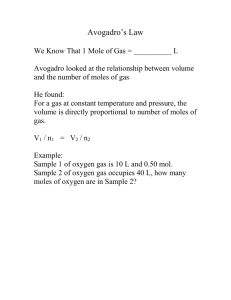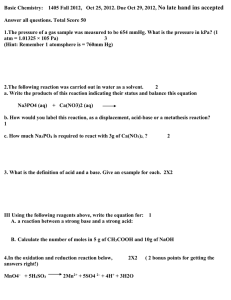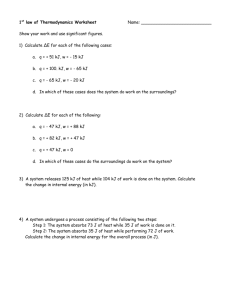Gas Laws Study Guide: Chemistry Chapter 11
advertisement
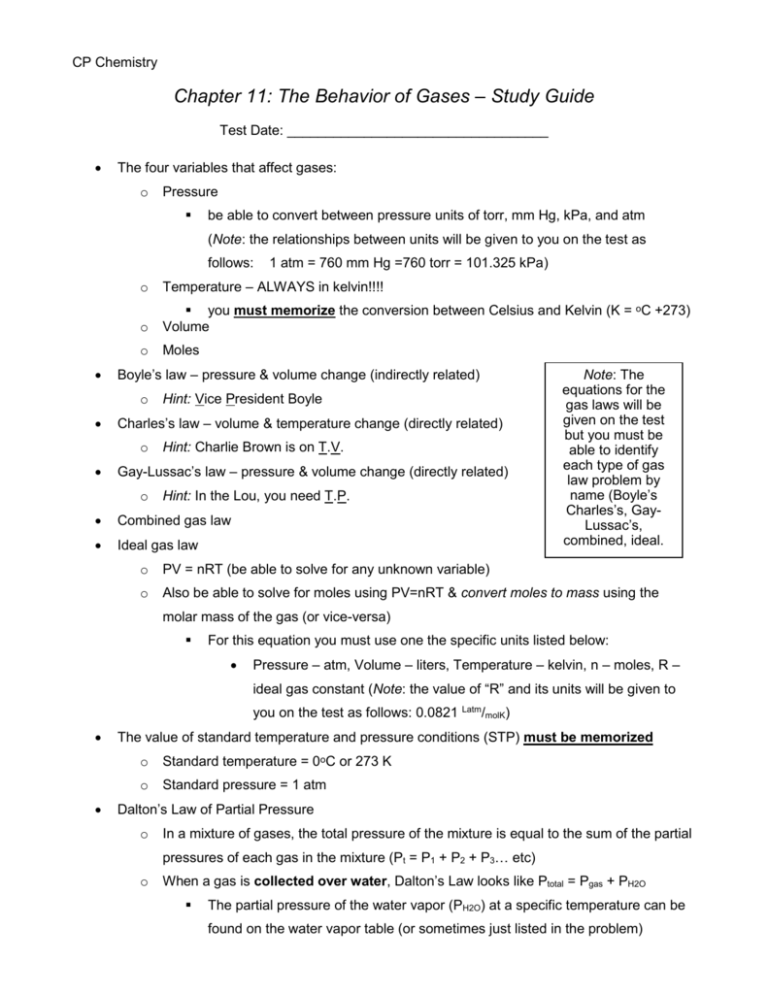
CP Chemistry Chapter 11: The Behavior of Gases – Study Guide Test Date: __________________________________ The four variables that affect gases: o Pressure be able to convert between pressure units of torr, mm Hg, kPa, and atm (Note: the relationships between units will be given to you on the test as follows: o Temperature – ALWAYS in kelvin!!!! o you must memorize the conversion between Celsius and Kelvin (K = ᵒC +273) Volume o Moles Boyle’s law – pressure & volume change (indirectly related) o Hint: Vice President Boyle Charles’s law – volume & temperature change (directly related) o 1 atm = 760 mm Hg =760 torr = 101.325 kPa) Hint: Charlie Brown is on T.V. Gay-Lussac’s law – pressure & volume change (directly related) o Hint: In the Lou, you need T.P. Combined gas law Ideal gas law Note: The equations for the gas laws will be given on the test but you must be able to identify each type of gas law problem by name (Boyle’s Charles’s, GayLussac’s, combined, ideal. o PV = nRT (be able to solve for any unknown variable) o Also be able to solve for moles using PV=nRT & convert moles to mass using the molar mass of the gas (or vice-versa) For this equation you must use one the specific units listed below: Pressure – atm, Volume – liters, Temperature – kelvin, n – moles, R – ideal gas constant (Note: the value of “R” and its units will be given to you on the test as follows: 0.0821 Latm/molK) The value of standard temperature and pressure conditions (STP) must be memorized o Standard temperature = 0ᵒC or 273 K o Standard pressure = 1 atm Dalton’s Law of Partial Pressure o In a mixture of gases, the total pressure of the mixture is equal to the sum of the partial pressures of each gas in the mixture (Pt = P1 + P2 + P3… etc) o When a gas is collected over water, Dalton’s Law looks like Ptotal = Pgas + PH2O The partial pressure of the water vapor (PH2O) at a specific temperature can be found on the water vapor table (or sometimes just listed in the problem)

